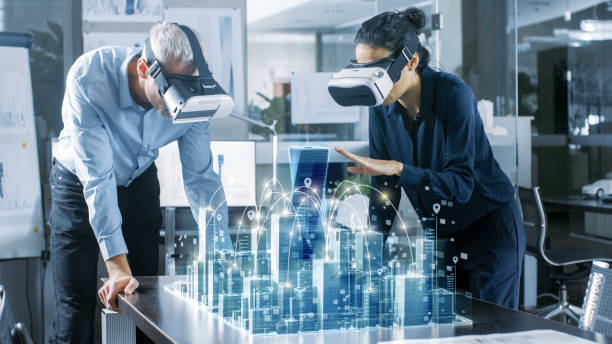The exam’s Comprehension Text
[1] Virtual Reality (VR) is a computer technology used to produce an environment that looks like reality. With VR, students, for example, can imagine themselves flying through space, diving deep under the sea, or traveling the world without stepping foot outside their classroom. In VR, a user wears a headset connected to a computer or mobile device to explore a three dimension (3D) setting. The user can move around in the space. Sights and sounds seem real. Some say the VR experience feels like jumping into a video game.
[2] Google is one of the companies creating VR experiences for students. It launched Google Expeditions in 2015. Now it offers more than 600 virtual field trips. Ben Schrom who works at Google Expeditions told Time For Kids magazine (TFK) “Teachers’ faces light up because we’ve given them a superpower; they can transport their classes somewhere else.”
[3] Katelyn Flanagan, 12 years old, used VR to jump to the surface of the moon. She also visited Jupiter and Mars. “It was so cool and so lifelike,” she says. Monica, a teacher at Morris Plains School, says her students loved the experience. “I think they enjoyed it so much because it’s different from watching a video. It broadens what I teach them,” she says. Chris Chin, who works for a VR company, says VR can also be used to teach real-world tasks. “People can learn how to fight fires or to become a doctor. A VR experience is a safer way to learn to treat patients,” Chin told TFK magazine.
[4] Research suggests that virtual reality could reach 15 million students by 2025. In a research conducted by TFK magazine, nearly 70% of school administrators have a positive view of VR in the classroom. Of those who do not have VR in their school or region, almost half say they are very interested in using it in different subjects in the future. However, not everyone is excited about VR. Some people are concerned about its effects on kids’ eyesight. Dr. Martin Banks, a professor of vision science at the University of California, says “we’re looking for evidence, but so far, we haven’t found any.” However, Dr. Banks has found proof of discomfort. “It can lead to headaches and nausea in a small number of people,” he adds.
[5] VR can also be costly. The best headsets cost more than $500. Google Cardboard viewers are more affordable. They cost less than $15 each but must be used with a smartphone. Classrooms would need a smartphone for every student, or kids would need to share one. Students like Katelyn hope that schools can overcome these obstacles and bring VR to the classroom. “I would like to go places I’ve never been to,” she says. “You don’t have to tell students about things anymore; you can show them.”
Adapted from www.timeforkids.com
National exam | Arts Stream | Ordinary Session 2018 with Answers





